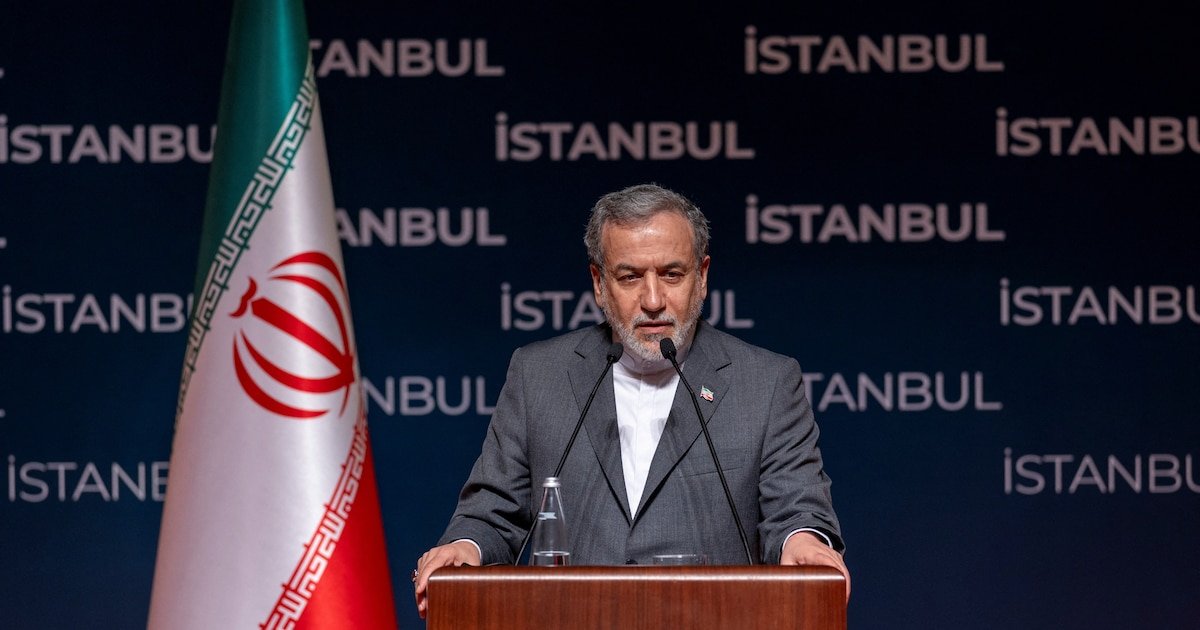INTERNACIONAL
País por país, así quedó el nuevo esquema arancelario de Estados Unidos tras la pausa que anunció Donald Trump

El presidente Donald Trump anunció este miércoles una rebaja al 10% de los aranceles “recíprocos” impuestos a países de todo el mundo, así como una pausa de 90 días de la medida, a días de su introducción.
Según explicó, la decisión se debió a que “más de 75 países” se han puesto en contacto con miembros de su Administración para encontrar una solución pacífica al asunto.
Si bien no por el momento el Gobierno de Trump no detalló cómo quedará el esquema arancelario, los principales beneficiados por el anuncio serían los principales socios comerciales de Estados Unidos que habían sufrido un aumento en la tasa que sus productos iban a pagar en la aduana norteamericana: la Unión Europea, Japón, Vietnam, Corea del Sur, Taiwán, India, Reino Unido, Suiza y Tailandia.
A esa lista se sumarían Indonesia, Malasia, Camboya, Sudáfrica, Bangladesh, Israel, Filipinas, Pakistán, Sri Lanka, Nicaragua, Noruega, Costa Rica, Jordania, Nueva Zelanda, Ecuador, Madagascar y Myanmar, que se habían visto más perjudicados, por aplicárseles aranceles de casi la mitad de lo que cobran a Estados Unidos.
En este mismo escenario estaban Túnez, Kazajistán, Serbia, Costa de Marfil, Lagos, Botswana, Trinidad y Tobago, Algeria, Lesoto, Mauricio, Fiji, Liechtenstein, Guyana, Bosnia y Herzegovina, Nigeria, Namibia, Brunei, Bolivia, Venezuela, Macedonia del Norte, Ghana, Papúa Nueva Guinea, Malawi, Afganistán, Zimbawe, Siria, Vanuatu, Moldavia, Angola, la República Democrática del Congo, Mozambique, Zambia, Irak, Camerún, Uganda, las Islas Malvinas, San Pedro y Miquelón, Santa Helena, Nauru, la Guinea Ecuatorial, Libia, las islas Norfolk, Reunion y Chad, que, en adelante, se enfrentarán a un gravamen del 10 por ciento.

En tanto, otro grupo de países no se vio afectado por la noticia ya que desde un primer momento fue alcanzado por un impuesto del 10 por ciento, en su mayoría por no representar un déficit sustancial para Estados Unidos o hacerlo en un nivel muy bajo.
Entre ellos están Perú, República Dominicana, Emiratos Árabes Unidos, Argentina, Guatemala, Honduras, Egipto, Arabia Saudita, El Salvador, Marruecos, Reino Unido, Brasil, Singapur, Chile, Australia, Omán, Uruguay, Bahamas, Ucrania, Bahréin, Turquía, Qatar, Islandia, Kenia, Haití, Panamá, Etiopía, Liberia, las Islas Vírgenes Británicas, Mónaco, Uzbekistán, República del Congo, Yibuti, Polinesia Francesa, Islas Caimán, Kosovo, Curazao, Ruanda, Sierra Leona, Mongolia, San Marino, Antigua y Barbuda, Bermudas y Colombia.
El secretario del Tesoro, Scott Bessent, aseguró que aquellos que no tomaron o amenazaron con tomar represalias contra Estados Unidos serán “recompensados” y adelantó que las primeras negociaciones que se mantendrán en el marco de este nuevo esquema serán con Vietnam, Japón, Corea del Sur e India.

Por el contrario, el único caso eximido de este alivio es China dado que, “debido a la falta de respeto que ha mostrado hacia los mercados mundiales», así como a su política de “estafar a Estados Unidos y a otros países”, Trump definió aumentar su tasa al 125%, con efecto inmediato.
Poco antes, este mismo miércoles, Beijing había activado nuevas represalias para los gravámenes estadounidenses, que hasta el anuncio alcanzaban el 104 por ciento, en un intento por ratificar su “voluntad firme” y sus “recursos abundantes” para responder “con determinación” a este enfrentamiento económico y comercial con la Casa Blanca.
“Cuando alguien golpea a Estados Unidos, el presidente Trump responde más fuerte”, aseguró la portavoz presidencial, Karoline Leavitt.

Pese al caso chino, la noticia de rebaja de los aranceles a gran parte de la comunidad mundial provocó un impacto inmediato en los mercados, que respondieron positivamente.
Las acciones en Wall Street se dispararon y el precio del petróleo volvió a subir, tras varias jornadas consecutivas en negativo.
INTERNACIONAL
Alina Habba defiant after judges vote against her in New Jersey: ‘I don’t cower to pressure’

NEWYou can now listen to Fox News articles!
Alina Habba signaled Thursday that she does not plan to leave her role as the temporary U.S. attorney of New Jersey, announcing she does «not cower» to pressure after federal judges voted against extending her term.
Habba, a former personal defense attorney to President Donald Trump, wrote in a statement online that she has been appointed the «acting» U.S. attorney, a shift from her prior job title.
«Donald J. Trump is the 47th President. Pam Bondi is the Attorney General. And I am now the Acting United States Attorney for the District of New Jersey,» Habba wrote. «I don’t cower to pressure. I don’t answer to politics. This is a fight for justice. And I’m all in.»
A Department of Justice (DOJ) spokesman told Fox News Digital that Habba was now serving as the acting U.S. attorney, rather than the «interim» position that she previously held.
DOJ SWIFTLY FIRES ALINA HABBA’S COURT-APPOINTED REPLACEMENT
President Donald Trump stands alongside Alina Habba during her swearing-in ceremony as interim U.S. attorney for New Jersey at the White House on March 28, 2025. (Andrew Harnik/Getty Images)
The maneuvers by Trump and Attorney General Pam Bondi to keep Habba as the top federal prosecutor in New Jersey are governed by a set of arcane federal vacancy laws.
Those same laws also gave the New Jersey district court judges the authority to vote on whether to extend Habba’s 120-day term as interim U.S. attorney or to replace her. In a rare move, they chose to replace her with Habba’s No. 2, Desiree Grace, but Bondi promptly fired Grace, leaving open the question of who would take the role.
ALINA HABBA SAYS AMERICA WAS ‘OFF‑TRACK’ FOR A LONG TIME

Alina Habba speaks during a panel at the 2025 Conservative Political Action Conference in Oxon Hill, Maryland. Habba, a former personal attorney to President Trump, is now serving as acting U.S. attorney for New Jersey. (Andrew Harnik/Getty Images)
The DOJ has said Habba’s term as «interim» U.S. attorney expires Friday. Fox News Digital learned that Habba resigned before that expiration day and that she was re-appointed as acting U.S. attorney, which has a 210-day term limit.
According to the judges’ appointment, Grace would take over come Saturday, but it is unclear if the judges’ vote is valid now given the changes to Habba’s job, and it is possible that the legal confusion could lead to a court fight.
Grace, a career prosecutor in the U.S. attorney’s office since 2016, wrote in a LinkedIn post after she was fired that it «has been the honor of a lifetime to represent the United States and to serve the people of New Jersey» and that she planned to be sworn in on Saturday.
WHITE HOUSE HITS BACK AT DEM MAYOR SUING US ATTORNEY AFTER ICE ARREST: ‘DESPERATE ATTEMPT’

Trump lawyer Alina Habba speaks at a campaign rally for former US President and Republican presidential candidate Donald Trump at the PPL Center in Allentown, Pennsylvania, on October 29, 2024. (Photo by ANGELA WEISS/AFP via Getty Images)
«Yesterday the District Judges for the District of New Jersey selected me to serve as the United States Attorney for the District of New Jersey,» Grace wrote. «It will forever be the greatest honor that they selected me on merit, and I’m prepared to follow that Order and begin to serve in accordance with the law.»
Trump has also nominated Habba to serve the full, four-year role as the permanent U.S. attorney, but that position requires Senate approval and Habba has no clear path to confirmation.
CLICK HERE TO GET THE FOX NEWS APP
New Jersey’s two Democratic senators, Sens. Cory Booker and Andy Kim, are currently holding up her nomination through the Senate’s «blue slip» tradition, and a person familiar with the matter said the Trump administration has not submitted any material for the Senate to vet Habba’s nomination in any case.
Booker said in a statement after Grace’s firing that the Trump administration has violated the law.
«The firing of a career public servant, lawfully appointed by the court, is another blatant attempt to intimidate anyone that doesn’t agree with them and undermine judicial independence,» Booker wrote on social media. «This Administration may not like the law, but they are not above it.»
Fox News’ David Spunt contributed to this report.
INTERNACIONAL
Alemania, Francia y Reino Unido retoman en Estambul las negociaciones nucleares con Irán

Representantes del régimen de Irán y de las potencias europeas conocidas como el E3 —Alemania, Francia y Reino Unido— se reunirán este viernes en Estambul para retomar las negociaciones nucleares interrumpidas tras el bombardeo estadounidense contra tres plantas atómicas de Teherán el pasado mes de junio.
El encuentro llega en un contexto marcado por amenazas de reinstaurar sanciones de Naciones Unidas bajo el mecanismo de “snapback”, contemplado en el acuerdo nuclear de 2015.
Las conversaciones serán las primeras desde el ataque israelí del 13 de junio, que provocó la muerte de altos mandos militares, científicos nucleares y cientos de civiles. Dos días después, se suspendieron las conversaciones previstas entre Irán y Estados Unidos, y posteriormente, el 22 de junio, Washington bombardeó instalaciones nucleares en Fordow, Isfahan y Natanz. Desde entonces, las tensiones se han intensificado.
La reunión en Estambul se celebra en medio de advertencias de los gobiernos europeos sobre la posibilidad de activar el “snapback” si no se logra un compromiso inmediato. Este mecanismo permitiría restablecer automáticamente las sanciones de la ONU que fueron levantadas en virtud del acuerdo nuclear de 2015. “Inacción por parte del E3 no es una opción”, señaló una fuente diplomática europea, citada por agencias internacionales. “Irán debe hacer gestos claros sobre su programa de enriquecimiento de uranio y su cooperación con el OIEA”.

El plazo para activar el snapback expira en octubre. Según la misma fuente, los países europeos están dispuestos a aplicar la medida “en ausencia de una solución negociada”.
Irán ha calificado cualquier intento de restablecer las sanciones como “ilegal”. Kazem Gharibabadi, viceministro de Relaciones Exteriores de Irán, que participará en las conversaciones junto al diplomático Majid Takht-Ravanchi, advirtió esta semana: “Activar sanciones es completamente ilegal. Hemos advertido de los riesgos, pero seguimos buscando un terreno común para gestionar esta situación”.
Gharibabadi también acusó a los gobiernos europeos de haber incumplido sus compromisos tras la salida unilateral de Estados Unidos del acuerdo, en 2018, bajo la presidencia de Donald Trump. Desde entonces, Irán ha revertido progresivamente sus compromisos nucleares, incluyendo límites al enriquecimiento de uranio.
Actualmente, según el Organismo Internacional de Energía Atómica (OIEA), Irán está enriqueciendo uranio hasta un 60 % de pureza, muy por encima del 3,67 % permitido en el acuerdo y cerca del nivel necesario para uso militar. Sin embargo, Teherán ha sostenido que no pretende fabricar armas nucleares y ha insistido en que su programa tiene fines pacíficos.

“Especialmente después de la reciente guerra, es importante que comprendan que la posición de la República Islámica de Irán sigue siendo firme”, declaró el canciller iraní Abbas Araghchi. “Nuestro enriquecimiento de uranio continuará. No renunciaremos a este derecho del pueblo iraní”.
No obstante, Araghchi reconoció que el enriquecimiento se encuentra actualmente suspendido debido a los daños sufridos durante los bombardeos de junio. “El daño a las instalaciones fue serio y severo”, afirmó.
En paralelo, Irán ha suspendido la cooperación con el OIEA y retiró a los inspectores internacionales del país. Las autoridades iraníes acusan al organismo de actuar con parcialidad y no haber condenado los ataques contra sus instalaciones. Se espera que una misión técnica del OIEA regrese en las próximas semanas, tras declaraciones del régimen iraní sobre una futura cooperación “en una nueva forma”.

Mientras tanto, Israel ha advertido que podría reanudar sus operaciones militares si Irán reconstruye sus instalaciones o da señales de avanzar hacia una capacidad nuclear armamentística. Teherán ha respondido que cualquier nuevo ataque recibirá una “respuesta dura”.
Las conversaciones de este viernes serán clave para determinar si aún existe espacio para un acuerdo diplomático que evite un nuevo aislamiento internacional de Irán y frene una posible escalada militar en la región. Los europeos buscan salvar los últimos elementos funcionales del acuerdo de 2015 antes de que se agote el margen de maniobra diplomático en otoño.
(Con información de AFP)
Diplomacy / Foreign Policy,Europe,Middle East,Military Conflicts,ISTANBUL
INTERNACIONAL
Bajo presión por la alarmante crisis humanitaria, Israel analiza la respuesta de Hamas al plan de tregua en Gaza

Israel anunció este jueves que está examinando la respuesta de Hamas a una propuesta de tregua de 60 días en la Franja de Gaza, mientras sigue creciendo la presión de organizaciones internacionales por el hambre en el devastado enclave palestino.
Desde el 6 de julio, los negociadores de ambos bandos mantienen conversaciones indirectas en Doha, en un intento por acordar una tregua que permita en un primer momento liberar a diez rehenes israelíes vivos, a cambio de un número indeterminado de palestinos presos en Israel.
Pero las negociaciones, que cuentan con la mediación de Qatar, Egipto y Estados Unidos, se eternizan sin resultados por el momento, y cada parte acusa a la otra de enrocarse en sus demandas.
«Los mediadores han transmitido la respuesta de Hamas al equipo de negociación israelí, y está actualmente en evaluación», indicó un breve comunicado del despacho del primer ministro de Israel Benjamin Netanyahu.
Según una fuente palestina cercana a las negociaciones, la respuesta incluye enmiendas a las modalidades de entrada de ayuda humanitaria, mapas de las zonas de las que el ejército israelí debería retirarse, y garantías sobre el fin definitivo de la guerra en curso desde octubre de 2023.
Los rehenes que todavía quedan en manos de Hamas fueron capturados por los terroristas que atacaron por sorpresa en el sur de Israel el 7 de octubre de 2023. Ese día, en una incursión sin precedentes, mataron a más de 1.200 personas, entre ellas decenas de jóvenes que asistían a un festival de música electrónica.
Además, se llevaron 251 rehenes, incluidos chicos y bebés. De ellos, 49 siguen cautivos en Gaza, y al menos 27 estarían muertas, según el ejército israelí.
Israel sigue afirmando que su objetivo es destruir las capacidades militares y de gobierno del movimiento extremista palestino.
La ofensiva israelí lanzada en el enclave tras el salvaje ataque del 7 de octubre de 2023 ya dejó desde entonces más de 59.000 muertos, según las autoridades de Gaza, gobernada por Hamas, y desató un desastre humanitario que denuncian cada día organizaciones internacionales.
Estados Unidos anunció que su enviado especial Steve Witkoff viajaba a Europa esta semana para mantener conversaciones sobre Gaza, y que luego podría ir a Oriente Medio.
El Departamento de Estado indicó que Witkoff emprende el viaje con «la firme esperanza de que logremos un nuevo alto el fuego, así como un corredor humanitario» que permita entregar la ayuda necesaria.
Tras imponer a Gaza un asedio total en octubre de 2023, Israel impuso de nuevo un bloqueo al enclave costero palestino a inicios de marzo, que aligeró en parte a fines de mayo.
Los más de dos millones de gazatíes sufren grandes dificultades para acceder a comida, medicamentos y combustible.
El director general de la Organización Mundial de la Salud (OMS), Tedros Adhanom Ghebreyesus, afirmó el miércoles que «gran parte» de la población de Gaza sufre hambre.
«No sé de qué otra forma se puede llamar a lo que sucede, si no es diciendo que hay gente muriéndose masivamente de hambre», declaró Tedros.
Para Francia, «el riesgo de hambruna» en Gaza es «resultado del bloqueo» impuesto por Israel.
El martes, un hospital de Gaza afirmó que 21 niños había muerto de hambre y desnutrición en las 72 horas previas.
«Mientras el asedio del gobierno israelí mata de hambre a la población de Gaza, personal humanitario se suma ahora a las mismas filas de alimentos, arriesgándose a que les disparen sólo para alimentar a sus familias», indicaron el miércoles 111 organizaciones, entre ellas Médicos Sin Fronteras (MSF), Save the Children y Oxfam, en un comunicado conjunto.
El gobierno israelí se defendió, diciendo que no es responsable de la penuria de alimentos.
El portavoz del gobierno israelí, David Mencer, afirmó que «no hay una hambruna causada por Israel. Se trata de una escasez provocada por Hamas», que gobierna en Gaza y que según él impide el reparto de la ayuda y saquea una parte de la misma.
Hamas por su lado ha negado siempre tales acusaciones.

 ECONOMIA3 días ago
ECONOMIA3 días agoEl consumo en Argentina crece 4% en junio, ante menor inflación y más crédito

 POLITICA2 días ago
POLITICA2 días agoMáximo Kirchner declaró una fortuna de 8.300 millones de pesos: representa un 76% más que el año anterior

 CHIMENTOS3 días ago
CHIMENTOS3 días agoEl desgarrador testimonio del hermano de Locomotora Oliveras: “El daño es irreversible, solo puede vivir con respirador”
























